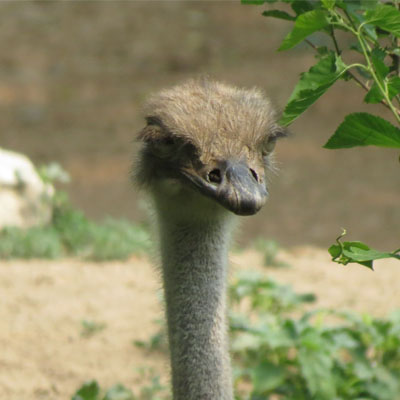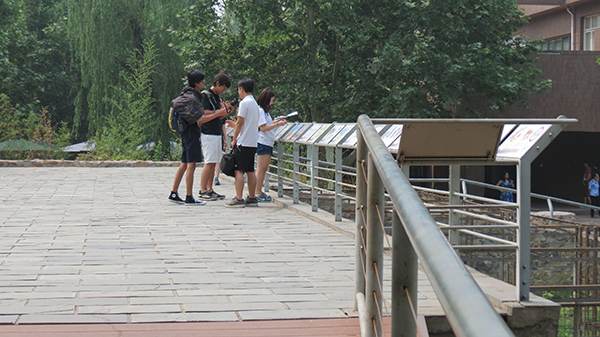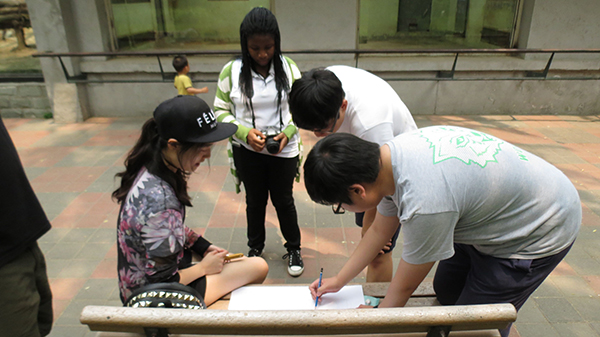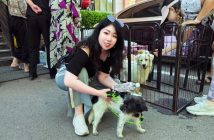One of the old adages spoken about school subjects by lazy school kids who didn’t want to do their homework was “how is this going to help me in real life?” The G4 project, an important part of the International Baccalaureate (IB) curriculum, is the perfect response demonstrating how four key subjects fit together and can be applied to real life problems.

BWYA Grade 11 science and design students visit Beijing Zoo for this year’s G4 project
Called the Group 4 project, it is a collaborative activity in which biology, chemistry, physics, and design technology students bring together all of their knowledge in order to find a solution to a real world problem. For Beijing World Youth Academy’s (BWYA) grade 11 scientists this meant taking a walk on the wild side to work on a very special project featuring Beijing Zoo. The students were split into groups with each group allocated an animal currently found in Beijing Zoo. They were then asked to address the question, “How can we build a better enclosure for your given animal?”

What are zoo guys looking at?
The groups got up close and personal with their allocated animal during a recent visit to the Zoo in order to see for themselves the current living conditions each animal experiences and how they could call on all their science and design skills to create a better living space for each creature.
Student Chan Young Park’s group looked at the enclosure of the Red Tailed Monkey. He said, “The G4 project is really interesting as we get to apply all of the knowledge we pick up in the classroom. Also, when we work as a team, one person might be really good at design, another at biology, and so on, so everyone in the group can play to their strengths and make a contribution. You can really see the links between the theories we cover in the classroom and what happens out in the real world.

Making it better – a BWYA G4 team inspects their animals enclosure
“We found that the Red Tailed Monkey enclosure needs a bit of work. The biggest issue that we found that would be easiest to fix is the water supply. At the moment it is just an uncovered metal bowl that is open to pollutants and our suggestion would be to design a new system that includes flowing water to help keep it clean and healthy for the animals. Building something like that would use our knowledge of biology, chemistry, physics and design at the same time.”
Eric Jung and his group looked at the Black Backed Jackal enclosure. He said, “I found my design skills to be really useful for this project. Having a knowledge of materials, how the environment affects them, and how to manipulate them really helped my group develop our solution.
“The Black Backed Jackal enclosure was really small for this type of animal, but there isn’t much we can do about that. According to our research though, we know that they like to sleep in humid, cave-like conditions and this is something we can definitely work into our design.”

G4 project team discusses their plans for improving their animals environment
Daniel Kweon’s group was allocated the Fennec Fox. He said, “These are really cute animals but in the wild they are endangered and need protecting. The enclosure at the zoo had a solid floor, even though these animals like to dig and live in tunnels under the ground. Our solution is to focus on this and create a living space that allows them dig and move around under the surface.”
Daniel added: “When you are in the classroom and focusing on each individual subject to get a good grade, it’s hard to look up sometimes and make connections between everything. The G4 project gives us a chance to go into the real world and see how everything works together. It’s also fun when get to work on a project that you can be excited and passionate about.”
After completing their field research, the teams of BWYA scientists will go back to the classroom to finalize their designs and prepare to present them to the rest of the class.

Glenn Jenkin, Head of Science at BWYA, said that he was really pleased with how all of the groups really applied themselves to the project. “The Group 4 project is really valuable as it demonstrates how all of the science disciplines fit together and relate to the real world, it also shows how science is everywhere and in everything we do” he added. “The students have to approach the project using robust scientific methods and data collection and communicate their findings in a clear way. It also helps them to work as a team so as well has improving their scientific skills they are working on skills that will help them in all walks of life.”
One of the key strengths of the IB curriculum that sets it apart from alternative programmes is its emphasis on applying classroom knowledge to real life situations and problems. Some of the best learning can take place outside of the classroom, as we see in BWYA’s G4 project. It’s hard to say “how is this going to be useful in real life” when you are standing facing a problem and applying all your knowledge and skills, as well as working as a team, to solve it.
 This post is provided for by BYWA
This post is provided for by BYWA
Photos: BWYA




